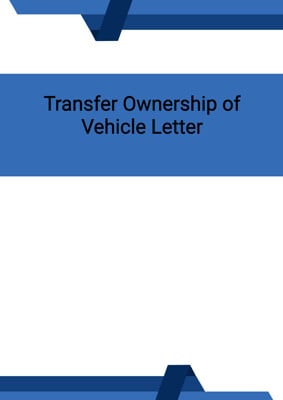How to Tailor the Document for Your Need?
01
Create Document
Fill in the details of the parties. You can click the "Fill with Member’s Information" button to complete it with information saved to your account.
02
Fill Information
Please fill in any additional information by following the step-by-step guide on the left hand side of the preview document and click the "Next" button.
03
Get Document
When you are done, click the "Get Document" button and you can download the document in Word or PDF format.
04
Review Document
The document should be signed by the authorised signatory (or directors of a company) and witnessed to complete the formality.
Document Preview
Document Description
A Motorcycle Bill of Sale Template is a legal document that serves as evidence of the transfer of ownership of a motorcycle from a seller (transferor) to a buyer (transferee). This document outlines the key details of the transaction and the motorcycle being sold. Here's what a typical Motorcycle Bill of Sale includes and why it is important:
1. Key Components:
Vehicle Information: Describes the motorcycle being sold, including make, model, year, vehicle identification number (VIN), and any other relevant details.
Transferor Information: Provides details about the seller, including their full name, address, and signature.
Transferee Information: Includes details about the buyer, such as their full name, address, and signature.
Purchase Price: Specifies the amount paid for the motorcycle, along with the currency used.
Date of Sale: Indicates the date on which the transfer of ownership takes place.
Odometer Reading: States the mileage or odometer reading of the motorcycle at the time of sale.
Condition and "AS IS" Clause: Clearly states that the motorcycle is sold on an "AS IS" basis, with no warranties, expressing or implied, as to its condition.
Liens and Encumbrances: The transferor assures that the motorcycle is free from any liens or encumbrances.
2. Importance:
Legal Documentation: Provides legal proof of the transfer of ownership, protecting both the buyer and the seller.
Record Keeping: Serves as a record of the transaction, which can be essential for future reference or in case of any disputes.
Liability Release: Clarifies that the motorcycle is sold in its current condition, reducing the seller's liability for any issues that may arise post-sale.
3. When is it Needed:
Private Sales: Whenever individuals engage in the private sale of a motorcycle, a Bill of Sale is crucial to document the transaction.
Transfer of Ownership: When there is a change in ownership of a motorcycle, whether between private parties or within a family.
Registration and Title Transfer: Often required by motor vehicle authorities during the process of registering the motorcycle and transferring the title.
In summary, a Motorcycle Bill of Sale is a vital document for recording the details of a motorcycle sale, protecting both the buyer and the seller by providing legal evidence of the transaction and establishing the terms and conditions of the sale. It is especially important when transferring ownership, registering the vehicle, or when engaging in private sales.
How to use this document?
Guidance on how to use the Bill of Sale:
1. Enter the necessary information: Fill in the details of the transferor(s) and transferee(s) in the agreement, including their full names and signatures. This ensures that both parties are clearly identified.
2. Record the payment and transfer date: Specify the amount of currency paid to the transferor(s) and the date of the transfer. This establishes the consideration for the transfer and the date of ownership transfer.
3. Verify the vehicle details: Ensure that the description of the vehicle matches the records of the jurisdiction state vehicle registry. This helps to confirm the accuracy of the vehicle's information.
4. Understand the 'as is' condition: Recognize that the vehicle is being transferred without any warranties or guarantees regarding its condition. This means that the transferee(s) accept the vehicle in its current state, and any repairs or maintenance will be their responsibility.
5. Sign and acknowledge the document: Both the transferor(s) and transferee(s) should sign and acknowledge the bill of sale. This confirms their agreement to the terms and conditions stated in the document.
It is important to follow these steps to ensure a smooth and legally valid transfer of ownership. Keep in mind that this guidance is for informational purposes only and does not constitute legal advice. If you have any specific legal concerns or questions, it is recommended to consult with a qualified legal professional.
Not the right document?
Don’t worry, we have thousands of documents for you to choose from:






